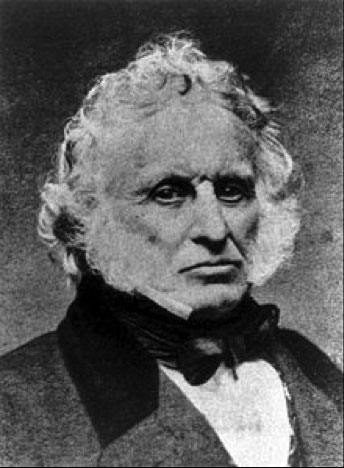200 years ago, ice was ... a luxury of Indian giants
In the 19th century, ice was once reserved for "conditional" houses!
Want ice? This is too easy! Just open the fridge or spend a very small amount of money that we already have an ice bag to use.
But if you go back in time to the 19th century, did you know that the pretty little stone in your hand was a fever in the Indian market, to the point that an entire "ice industry" once existed and thrived. strong?
Unprecedented idea of a business selling ice
In 1805, Frederic Tudor , an American man, was only 22 years old, on a travel trip came up with a bold business idea: ice . Tudor realized that people in many cities in countries with hot climates - like India - had never seen it, let alone use ice.

Frederic Tudor - pioneer with the ice business.
So Tudor hired some workers and made the first shipment on a boat. Everyone mocked this idea and thought he was insane, simply because he was setting up an unprecedented business in history.
Difficulties and stories " dare to dare to do"
Things are not too smooth for a young entrepreneur. On the first trip, even though the ice was transferred, it was melted immediately after landing, because it was not properly preserved.
Not only that, Tudor found that people in warm places that have a habit of hundreds of years are eating only warm things. So he started by focusing on the market as bars, because he thought that people who drank whiskey would easily become their customers.
It was difficult to convince them, so he applied the trick: free first attempts. And thanks to that, he applied a new habit for cultures that lasted for hundreds of years.
However, Tudor's ice-making career only really turned to the page when he started expanding his business to India. This item was quickly received warmly. The Indians in India are extremely accepting of this product, as it helps them withstand the burning heat in Calcutta and Bombay.

Ice became an extremely hot commodity at that time, but not everyone could buy it.
In addition, people also realized that preserving fruits and vegetables in cold ice makes them much longer fresh. And ice suddenly became a very hot item at that time, but not everyone could buy it.
Its price is obviously not pleasant, average per kg of ice costs about £ 1.6 according to 2010 value (about VND 50,000). You don't think it's cheap, because 1kg of ice is made up of only 1 liter of water - which is extremely small. That's the price that only those who have conditions can dare to spend.
But this does not affect the demand of the Indian market at all. Every year, Tudor exports thousands of tons of ice to India, so from 1833 to 1850, he pocketed $ 4.7 million in profits only thanks to this product.
It's easy to make money too easily
In this period, quarrying depends on the supply of cold lakes . Workers will come to the frozen lake area, split each piece of ice and cut them into smaller blocks. Heavy objects are inserted between blocks of ice to separate them from each other.
Ice blocks will begin to float in water, through conveyor belts and be stored in a bank house. Then they will be loaded onto the ship, shipped to India for consumption.

Exploiting ice.
The blocks will be preserved in a box, with a layer of sawdust for good thermal insulation. They can even build a cold storage with ice to limit melting. So, a lot of ice houses were built in India to serve this business.

Break the tape and put it into the bank.
Ice trade then developed strongly in India, because transporting ice from the US to India is quite easy. Vessels often carry goods to the US and return empty, and businesses take advantage of this, so the cost of transporting ice from the US to India is very small.
If so, to see that Tudor's work of taking stones is very simple, there is no proprietary technology. When I saw a profitable business, many other businesses also jumped into the game, making Tudor's brand no longer as attractive as the original.
Costs are gradually decreasing, until birth. Today, of course, we don't need to buy ice cubes at a high price.
- Legend of the two-headed giant
- Indian students announce Androidly smart watch
- The fate of the Irish giant remains
- Mysterious body of the giant in a book at the Dead Sea
- Confucius, Confucian, Confucian - Chinese
- Private aircraft are only for super-rich
- Decipher the mysterious red dot on the Indian woman's forehead
- The tribe live separately 55,000 years on the Indian Ocean Islands
- Indian secret hides thousands of years: Difficult questions for scientists
- Redefining the age of Indian civilization
- Scientific explanation of the land existed of
- Why did oysters turn from cheap food to expensive luxury?
 'Fine laughs' - Scary and painful torture in ancient times
'Fine laughs' - Scary and painful torture in ancient times The sequence of numbers 142857 of the Egyptian pyramids is known as the strangest number in the world - Why?
The sequence of numbers 142857 of the Egyptian pyramids is known as the strangest number in the world - Why? History of the iron
History of the iron What is alum?
What is alum?